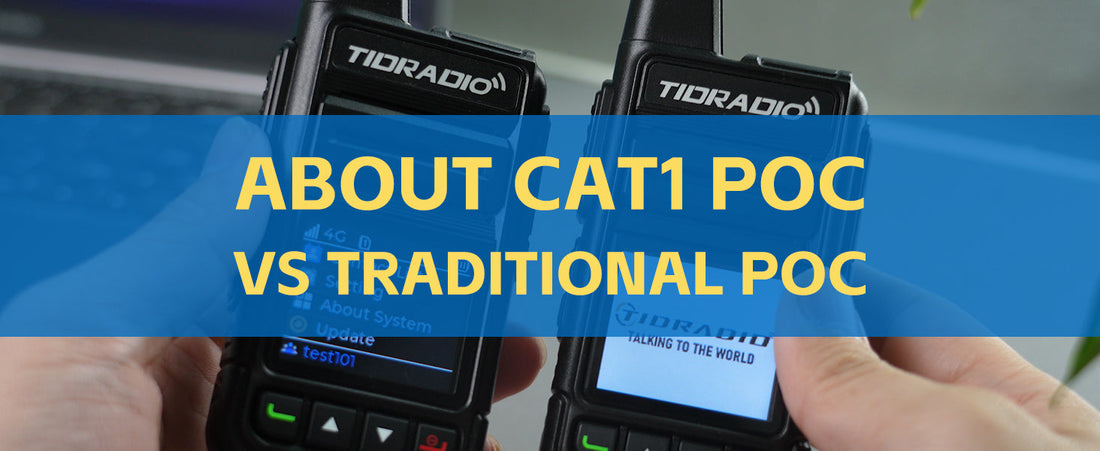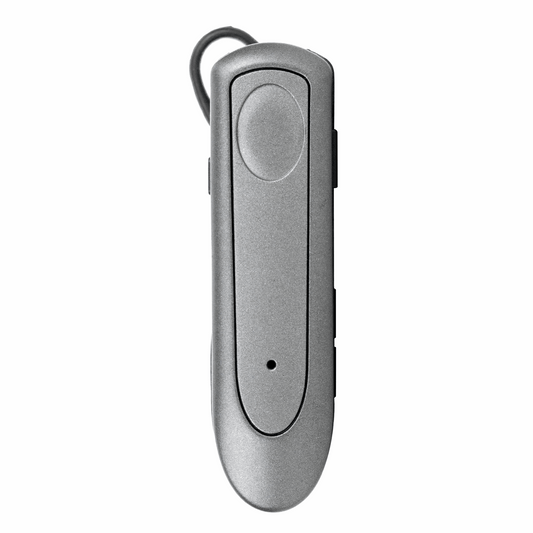
New Cat1 PoC Global Walkie-Talkie VS Traditional PoC Radio
TIDRADIO Cat1 PoC Radio — 4G Push-to-Talk 2 Way Radio for Teams
SEO title: TIDRADIO Cat1 PoC Radio | 4G PoC Walkie-Talkie for Teams
Meta description: Discover TIDRADIO Cat1 PoC radios, reliable 2-way radio solutions with global 4G coverage, PTT group calls, long battery life, and OTA updates
-
What is a Cat1 PoC radio
1.1 A Cat1 PoC radio is a 4G LTE push-to-talk device that delivers the instant response of a traditional 2-way radio while running on cellular networks.
1.2 Because it uses LTE Cat1, a PoC walkie-talkie provides far greater range than local analog radios, enabling teams to communicate across cities, states, and countries wherever there is mobile network coverage.
1.3 Common capabilities include one-to-one calls, group calls, voice recording, and over-the-air firmware upgrades. -
Key features that US customers care about
2.1 Wide network coverage — works wherever 4G LTE is available, making it a true global 4G radio and global walkie-talkie solution for companies that operate across regions.
2.2 Low-latency voice — push-to-talk performance that feels like a classic 2-way radio.
2.3 Remote management and OTA upgrades — centralized device management reduces downtime for large fleets.
2.4 Long battery life — designed for multi-shift operations and outdoor use. -
Typical applications
3.1 Logistics and transportation — fleet coordination, live tracking, and route changes with real-time PTT.
3.2 Public safety and security — group dispatch and coordinated response across jurisdictions.
3.3 Facilities and property management — campuses, malls, and large venues that need instant team communications and one-touch broadcasts.
3.4 Construction and engineering — site coordination, contractor dispatch, and integration with monitoring systems.
3.5 Outdoor teams and events — event staff, tour operators, and field teams that need global 4G walkie-talkie capability. -
How Cat1 PoC radios differ from traditional PoC and analog radios
4.1 Network differences — Cat1 PoC radios use LTE Cat1 for better throughput and reliability, while older PoC devices may rely on 2G or 3G or limited 4G setups.
4.2 Feature differences — Cat1 PoC radios combine voice and small data, backend management, and OTA updates; traditional radios are primarily voice devices.
4.3 Coverage and scale — Cat1 PoC supports cross-regional and international dispatch; analog 2-way radio systems are best for local communication and require radio infrastructure and licensing. -
Market trends and value for US buyers
5.1 Adoption is growing as businesses prefer centralized, scalable communications without spectrum licensing.
5.2 Industries such as logistics, security, and emergency services prioritize predictable costs and global reach provided by a global 4G radio.
5.3 For US buyers, Cat1 PoC radios simplify cross-state expansion and remote site deployment while reducing the need for local radio infrastructure. -
Case highlight: large event security
6.1 Challenge — multiple venues across cities require a unified command and fast coordination; analog radios cannot provide seamless cross-city communication.
6.2 Solution — equip security teams with 4G PoC radios and create cross-city group channels for instant push-to-talk.
6.3 Result — faster coordination, measurable reductions in response time, and simplified temporary deployment for events. -
TIDRADIO PoC series benefits
7.1 Unlimited range where LTE is available — combines the immediacy of a walkie-talkie with the reach of a global radio.
7.2 Predictable costs — devices can include an IoT SIM card and a one-year service option for transparent recurring pricing.
7.3 Easy group management — companion app for creating and managing channels and users without complex provisioning.
7.4 Scalable group calls — supports large groups for events and enterprise coordination.
7.5 Voice recording and playback — keep searchable logs for training, compliance, and incident review.
7.6 Long battery options — designs that support multi-shift operations and extended field use.
7.7 One-click OTA upgrades — keep firmware current without sending devices back to the factory.
7.8 Reliable data bundles — typical packages support daily PTT usage and basic data features -
Recommended models and product page essentials
8.1 TD-M13 — nationwide PTT 4G PoC radio, ideal for regional fleets and logistics teams.
8.2 TD-M15 — global 4G PTT walkie-talkie, suited for cross-state and international teams.
8.3 Product page specs to show clearly: network type LTE Cat1, battery capacity in mAh, maximum group size, included IoT SIM plan, OTA support, and warranty. -
Ready-to-use page content blocks
9.1 H1 heading for blog or product page
TIDRADIO Cat1 PoC Radio 4G Push-to-Talk 2 Way Radio for Teams
9.2 Short hero copy for collection or banner
TIDRADIO 4G PoC radio delivers instant push-to-talk anywhere with LTE coverage. Reliable 2-way radio performance with GPS, OTA updates, and scalable group management.
9.3 Short FAQ items to paste on product pages
Q: How is a PoC radio different from an analog 2-way radio
A: A PoC radio uses the cellular network to provide cross-regional coverage and supports data features. An analog 2-way radio is best for local short-range use and may require licensing.
Q: Do I need a subscription
A: Devices can include an IoT SIM with a one-year service plan. Renewal options are transparent and can be managed by the customer or through the vendor.
-
Conclusion
Cat1 PoC radio is more than an upgraded walkie-talkie. It is a combined voice and data communication platform that scales with modern operations. For teams that need cross-region reliability, centralized management, and predictable costs, PoC radio offers a practical path to better coordination and faster response. TIDRADIO provides a range of PoC radios built for logistics, security, events, and field operations, delivering global 4G radio capability with the simplicity of a 2-way radio.





